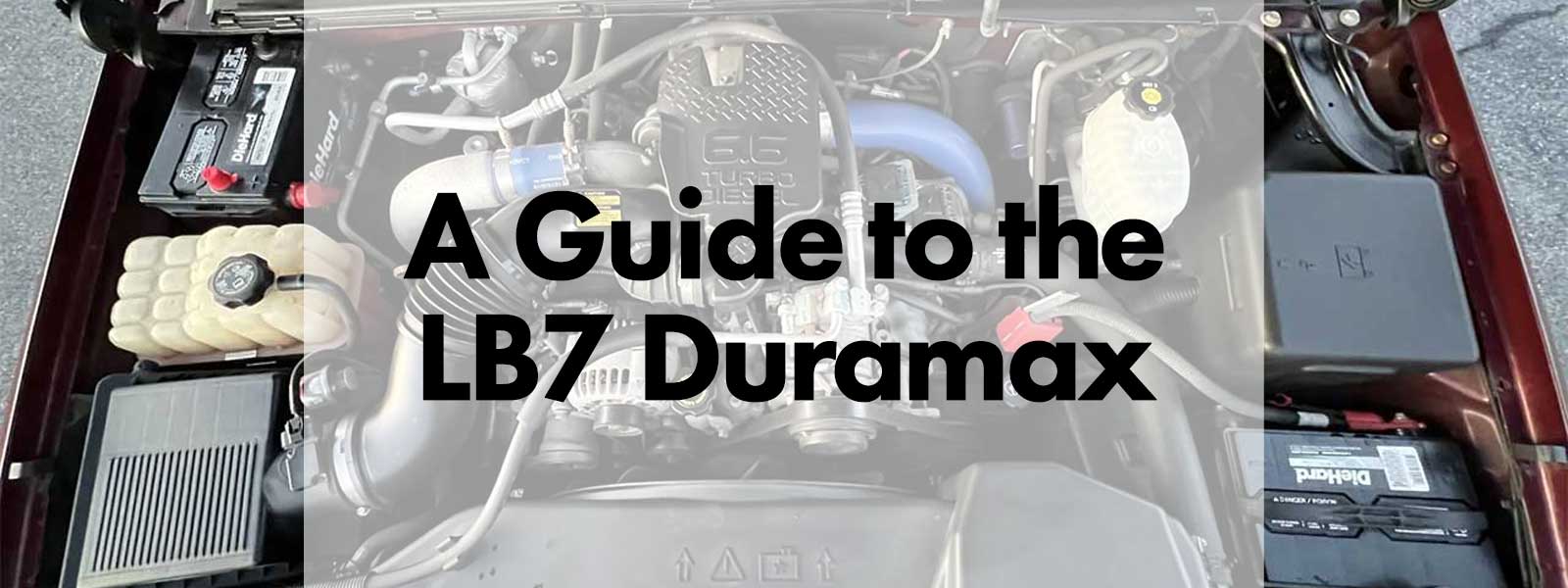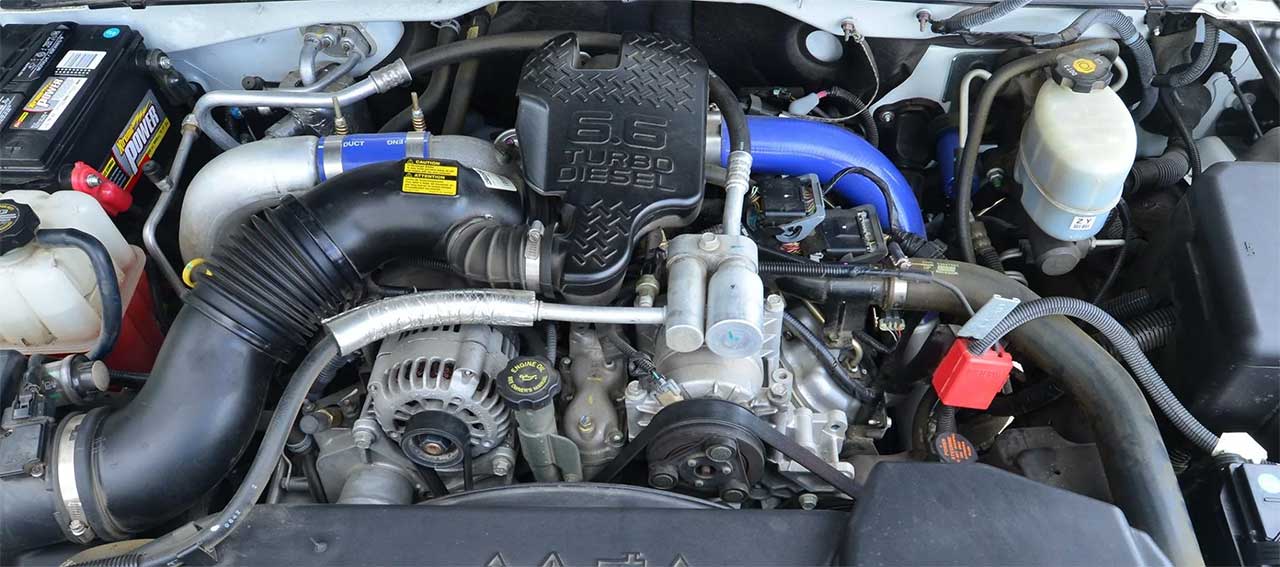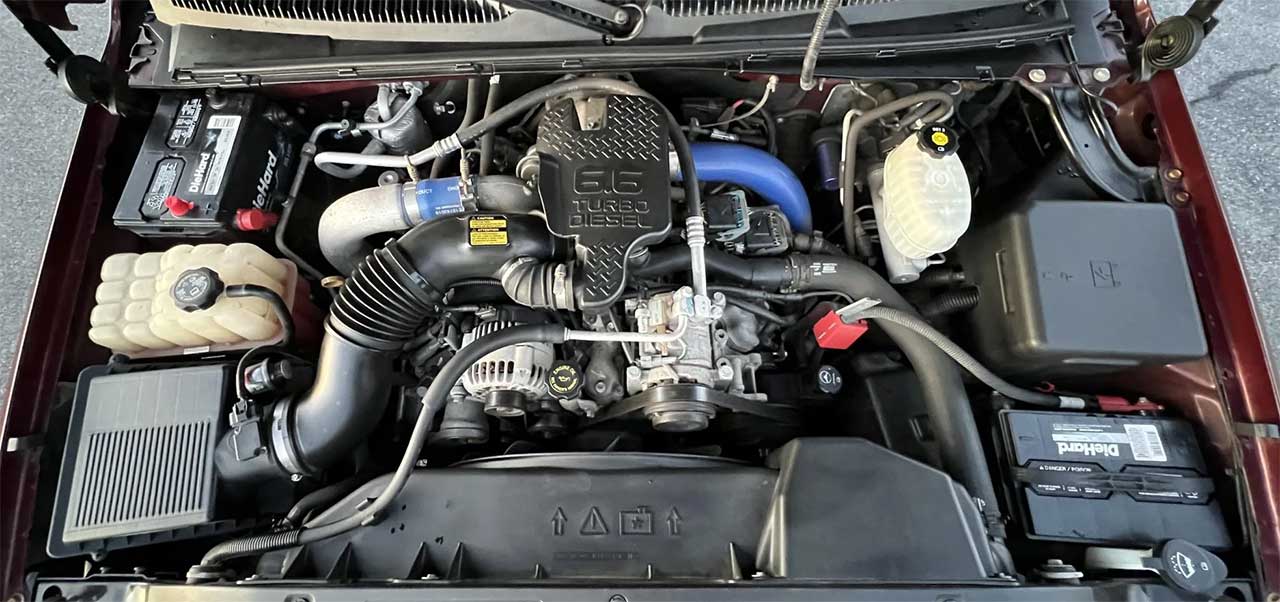

It’s always hard to beat the original, and that’s one of the reasons the Duramax LB7 is a notable engine in the history of the Chevy Silverado and GMC Sierra HD lineup. The LB7 is the first diesel engine to be called a Duramax and the first engine that came out of the Isuzu Motors and General Motors partnership.
The LB7 filled a much-needed niche in the GM HD lineup for an engine that offered roughly the same displacement as a large gas engine but was capable of making more torque and better fuel efficiency as is expected from a diesel engine.
The LB7 Duramax was born out of the partnership between GM and Isuzu. That partnership began in 1972 when GM was trying to find ways to move on from the muscle-car era of the 1960s. At a time when more drivers were looking for fuel-efficient vehicles, GM didn’t have much to offer. By teaming up with Isuzu, which was already making small fuel-efficient vehicles, GM found its way out of the void left by the muscle-car era.
In the 1990s, things were going well for both GM and Isuzu, so GM decided to focus on diesel technology for its lineup of HD trucks. Isuzu was an expert in diesel technology and was the owner of several patents at the time. In 1997, DMAX Ltd. was formed as an engine manufacturer owned by both GM and Isuzu. The goal was to build a medium to heavy-duty diesel engine and mass-produce it.
In only 37 months, this goal was realized and DMAX was running out of a factory that could make 100,000 engines per year. Unfortunately for Isuzu, its sales in the United States fell flat by the mid-2000s and GM ended up with a larger stake in Duramax at a 60:40 ratio.

Image copyright and courtesy of BringATrailer.com
2002 GMC Sierra 3500 SLT Crew Cab Duramax LB7
The LB7 Duramax had some key specs that gave it form and function. DMAX created an engine that could cleanly fit in the HD pickup line from GM. This is more difficult than it sounds as diesel engines have additional equipment that makes them bulkier than gas engines.
However, the LB7 design put the extra equipment in the valley of the engine. A clever cooling system was set up with the oil cooler on the left side of the cylinder block. Extra equipment ran via a serpentine belt located at the front of the engine.
The LB7 Duramax block was made from gray iron alloy and designed with increased rigidity. The top two inches of each cylinder bore underwent induction hardening to help resist cylinder wall wear. Internal LB7 Duramax parts were constructed in a way that made them both lightweight and very durable.
LB7 parts like the pistons were made from lightweight cast aluminum and the connecting rods were constructed from forged steel. The goal was to use the lightest material possible without sacrificing durability.
The LB7 turbo system was a fixed geometry type, which makes it the only fixed geometry system used on a Duramax engine.

Image copyright and courtesy of BringATrailer.com
2003 Chevrolet Silverado 2500HD Duramax LB7
The LB7 Duramax can be found in the 2001-2004 Chevrolet Silverado HD and GMC Sierra HD. It was also used in the Chevrolet Kodiak and GMC Topkick, which were medium-duty trucks produced until 2009. The LB7 was introduced in 2001 and used until early 2004 before it was replaced with the LLY Duramax.
Although all years of the LB7 potentially had a few issues, including problems with the head gasket, the LB7 Duramax injectors, and the fuel filter housing o-rings, the LB7 is generally considered a reliable engine. However, the 2003 and 2004 years are often touted by enthusiasts to be the best years for the reason that bugs from the earlier engines were worked out by then. Another reason these years are often said to be the best is that the trucks they were in had more options.
When it comes to reliability and durability, the LB7 Duramax was actually extremely competent at both, especially for a first-generation engine. The LB7 really only had three major issues that plagued it during its run. One of these was the fuel injectors. This is at least partially due to the fact that Diesel Direct Fuel Injection technology was actually pioneered on this engine. As a new technology, it was only natural that it would have some issues. These are the top two:
Another issue with the LB7 was a flawed head gasket design. This meant that failure was almost totally inevitable at some point. If you have an LB7 with a lot of mileage, it’s probably worth your while to get a quality head gasket kit if it hasn’t been done already.
Although less dire than the previously mentioned issues, the fuel filter housing o-rings were prone to failure and leaking. This is another area where a quality aftermarket kit can help.

Image copyright and courtesy of BringATrailer.com
2003 GMC Sierra 2500HD SLE Duramax LB7
The LB7 Duramax is a 6.6-liter V8 diesel engine. It was capable of producing 300 horsepower at 3,100 RPM and 520 pound-feet of torque at 1,800 RPM.
Rely on ProSource Diesel for a wide variety of LB7 performance parts and aftermarket diesel truck parts for Duramax engines. Whether you need an LB7 turbo, an LB7 tuner for more power, or an LB7 cold intake, we have the parts you need to keep your engine running great for a long time.